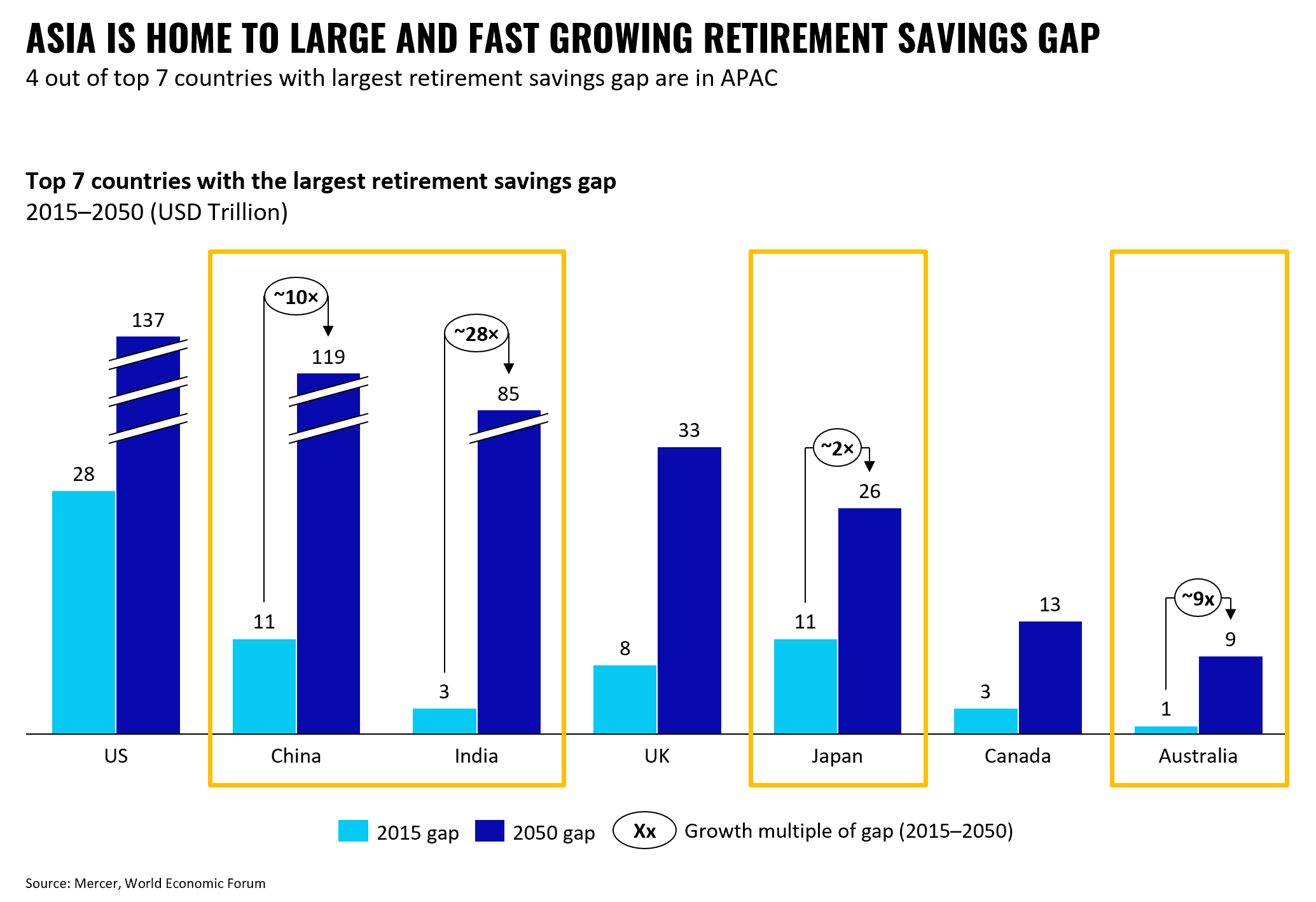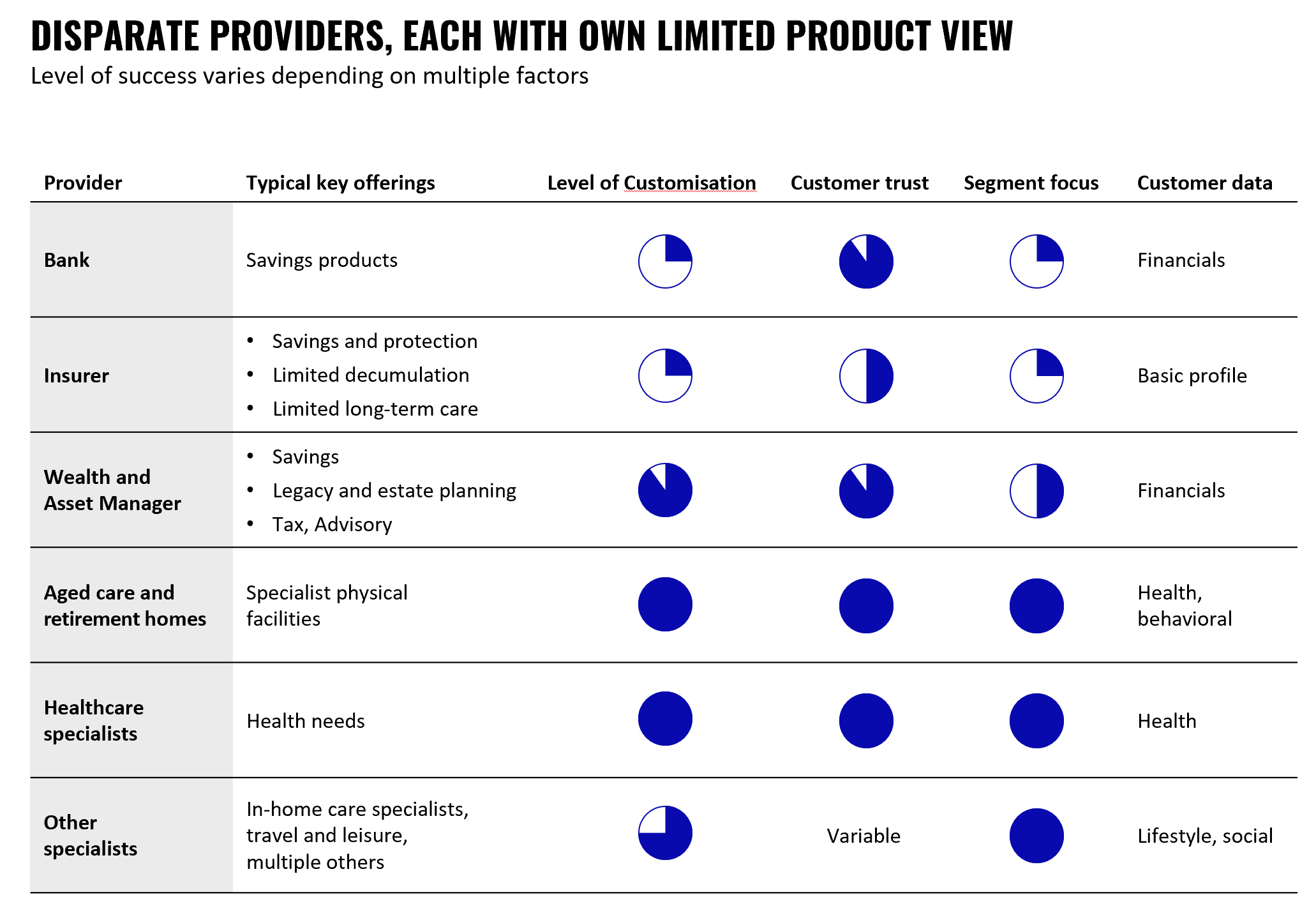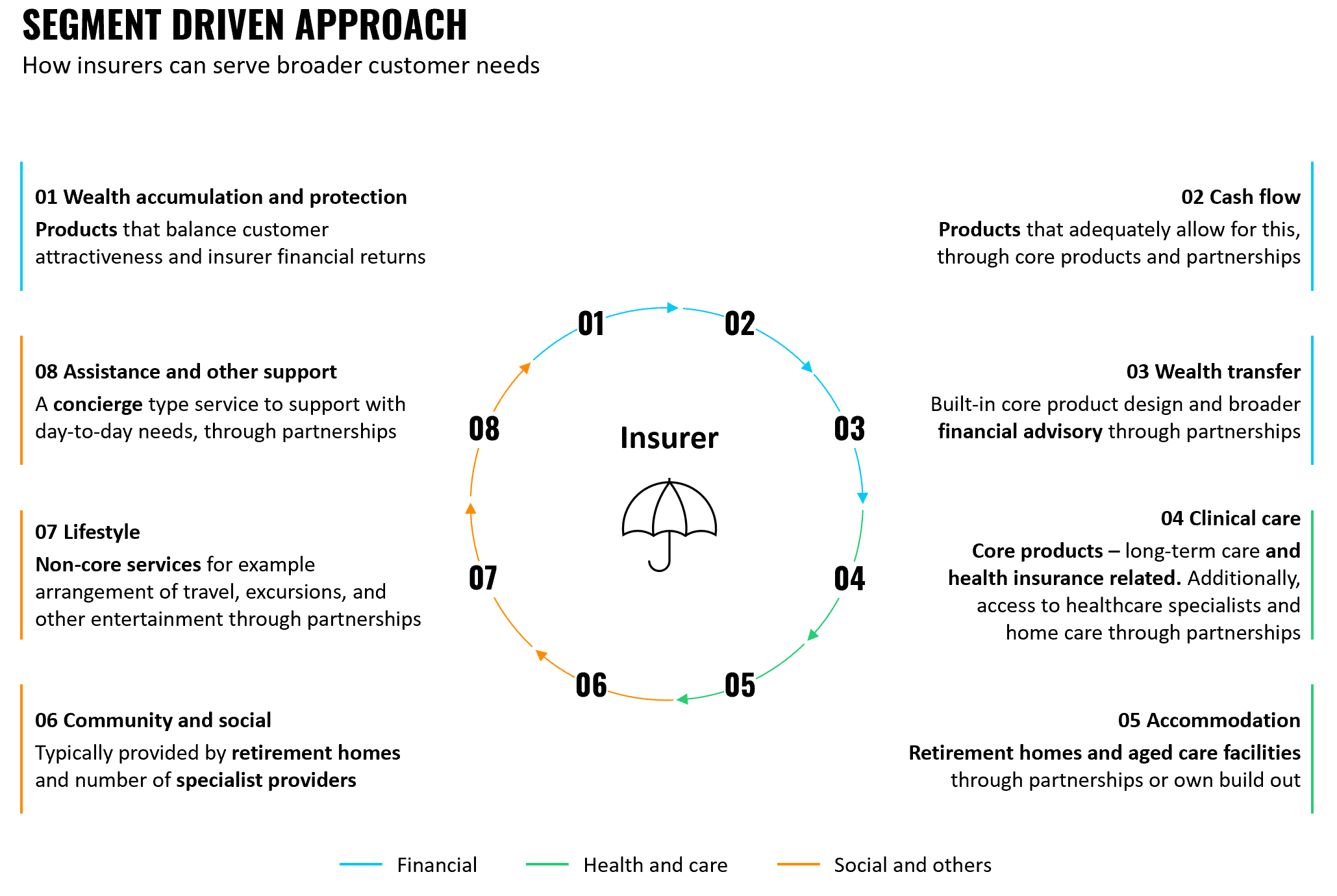The elderly have been severely impacted by COVID-19: their mortality rates have been the highest, clusters have quickly spread in retirement homes and aged care facilities and the financial impact from the investment market disruption is acutely felt by those in or approaching retirement.
Caring for the more vulnerable isn’t just a positive social action and government policy imperative, private sector organisations stand to gain financially and enhance their reputation by serving this segment in a holistic way. In this article, we share our views on the changing status of retirees in Asia and how insurers can better serve this segment.
The opportunity
Approximately a quarter of the population in the Asia Pacific is expected to be over the age of 60 by 2050, reaching close to 1.3 billion people. Marsh & McLennan Companies proprietary analysis reveals that four out of the seven largest retirement savings gap countries are in Asia and that this gap is expected to increase multi-fold by 2050 (see exhibit 1).
Exhibit 1: Asia is home to large and fast-growing retirement savings gap

The challenge
The needs of retirees are diverse and not very well understood, typically including a combination of affordable non-clinical care, ageing in place provisions or comfortable accommodation, independence, maintenance of social connections and desired lifestyle, liquidity of assets and financial security, and wealth transfer after their time.
But the products that exist in the market today are quite narrow and are provided by a diverse set of players, each with a different degree of understanding of and focus on the retiree segment. Providers from each sector have taken an existing product-led view, serving a limited need, based on limited data (see exhibit 2).
Exhibit 2: Disparate providers, each with own limited product view

For some sectors and providers (for example, retirement homes and health professionals), this business model has been quite successful given the large extrinsic demand, typically high barriers to entry and government or policy support. However, many financial services providers, particularly insurers and wealth and asset managers have struggled to serve this segment in an economic manner. Reasons for that are numerous and include limited understanding of the true customer need, reduced internal focus, short-term investment horizon, and limited willingness to collaborate with other players.
Related: A Possible Solution to the Soaring Old-Age Dependency Ratio?
The way forward
Today’s new senior consumers are very different, they are aspirational, more aware and better prepared, but despite that, they are still worried about their multiple unmet needs. Insurance companies in Asia can economically serve this segment, but they need to go beyond the traditional product-led approach. They need to better understand the broader customer needs, innovate on propositions, stress test the economics and partner with a range of providers to be able to own the segment.
Key aspects of the blueprint are discussed in detail below:
1. Innovate on propositions:
Traditional retirement products have had multiple challenges. For the customer, they have been addressing a narrow need and are often expensive. For insurers, they have been uneconomical and hard to sell. The combination of both has stymied innovation. Going forward, insurers need to rethink the propositions to try and address both these challenges, and we are already starting to see some innovation.
In China, multiple insurers are investing in retirement care community living projects with end-to-end services, including medical care and entertainment facilities that address multiple key needs of the senior population. In Japan, insurance products and services like dementia insurance, home care services, lifestyle support desks, and customer quizzes on dementia, are being used to tackle challenges of Japan’s ageing population and help the senior population live with a sense of security.
Other insurance companies are forming partnerships with asset managers, health care providers, service vendors and others to go beyond core capabilities and be able to address the needs of the segment by forming an ecosystem of products and services.
2. Partner:
Retiree needs may be broad and diverse but given that their dependency on the external world is significantly high at that age, most of the needs are core needs and not just good to have. For example, retirees have advisory needs for broader financial and asset management beyond insurance and that has implications for core product offerings as well, similarly, they have needs for health care. Insurers can serve some of the financial needs via the products they manufacture, but to take the holistic segment driven approach, players need more than just the core insurance and retirement products.
When innovating with propositions, a range of partnership options are now available across asset management, health care, service providers and more, and the partnership models are rapidly evolving. At the core of this is the operating model which insurers need to reshape and perfect themselves by balancing core products, core capabilities, distribution, value-added services and partnerships (see exhibit 3).
Exhibit 3: Segment driven approach

3. Stress test the economics:
Players need to take a holistic view of the economics of serving this segment rather than just purely focusing on traditional standalone product economics.
Many insurers and wealth managers may either completely lose these customers as they enter retirement and cancel traditional products or have a reduced economic value as they move into lower margin decumulation products. For such players, there is significant opportunity in retaining these customers for longer, even if the standalone product economics at a unit level are lower than in the accumulation phase.
In addition, players need to dissect the different sources of value such as product manufacturing, asset management, advisory, health, and other partnership offerings and assess both how they can increase each source individually but also focus on the overall picture.
Read also: AIA Platinum Wealth Elite: Powered by world-class institutional investors
The COVID-19 crisis will increase awareness among retirees on the need to reassess how their financial and health needs will be met in the future. They will be looking for greater security and may value it to a greater extent than they did in the past. Governments and health care players will re-examine the effectiveness and sustainability of their services. Insurance players have the opportunity to not only create material financial value but also to provide peace of mind to the segment that needs it most.

Angat Sandhu is a Partner in Oliver Wyman and leads the Asia Pacific Insurance business.

Ajit Rochlani is a Senior Engagement Manager in the Asia Pacific Insurance Practice at Oliver Wyman.
Connect with us to get the latest: Facebook / Instagram / LinkedIn / Soundcloud / YouTube /